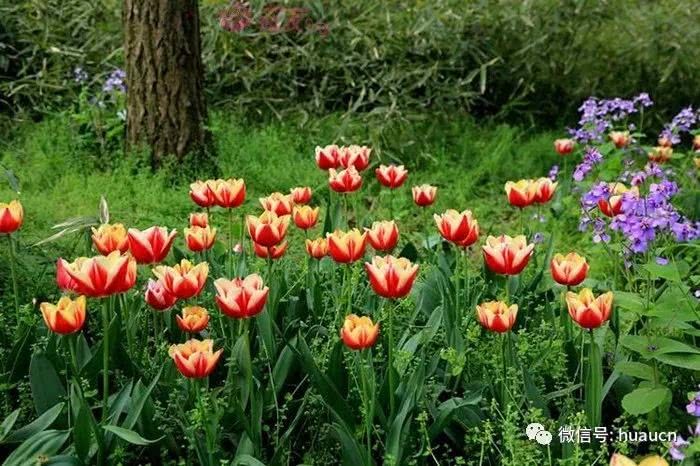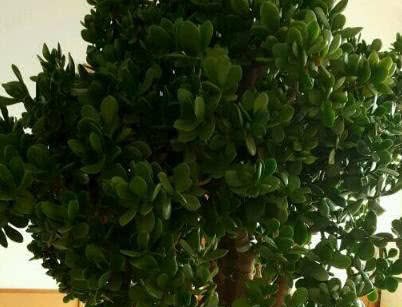Do you know the number and skill of plant planting as a landscape architect?

As a landscape designer, it is not enough to understand the basic requirements of plant configuration, and it is best to know the "number" and "skill" of plant planting.
"1" is not a lonely number.
When making a landscape, "1" no longer represents a musical symbol, nor is it a symbol of the highest honor, let alone alone. If a plant is used as a focal point or landmark of a landscape, make sure that the botanical characteristics of the plant are sufficient to consolidate its important position.
The symbol of "2" traditional mode
Like the doorman in front of the palace, the number "2" represents a strict regulation. Therefore, planting a plant on each side of the entrance to the garden or the entrance to the house can give people a rigorous and formal first impression. Trees and shrubs are often used in pairs, but perennials are not very likely to appear. Usually some large perennials and annual grasses, as well as some annuals and weak perennials can be planted in pairs at the entrance or entrance.
"3" represents a balance.
"3" can be used to represent a kind of human social relationship, and this digital pattern often appears in landscaping. This model needs reasonable arrangements to achieve the desired results, such as planting three plants in a row, it will appear dull and boring; if there is enough space, according to the equilateral triangle model, the landscape effect is definitely much more beautiful than straight-line planting. This model is suitable for plants with erect plants. There should be plenty of space between plant materials, especially when the plant species are different. Sometimes, you can even replace one of the plants with courtyard decorations, such as basin decorations for birds to drink.
The effect of "4" average distribution is good.
"4" can be distributed in different ways, such as evenly divided into two groups and planted at the entrance. In fact, another very good way is to plant four plants in each small area of an equally divided circular or square plot, regardless of whether the plant species are the same. In addition, "4" can also be allocated according to 3: 1, and then planted at the entrance or on both sides of the road, this method is often used to arrange evergreen plants. However, when arranging such a scheme, the overall structure and weight level of one party in three groups should be basically the same as that of one group, otherwise the coordination of the landscape will be destroyed.
"5" to create a good visual experience
"5" is a very frequently used number in landscape design. The conventional design pattern is to divide it into two rows, with 3 plants in the first row and 2 plants in the second row. This model is very suitable for rectangular planting beds, as well as irregular planting beds, but not suitable for plant settings on both sides of the road.
"6" is evenly divided into two groups.
It is a good choice to divide the "6" into two groups on average. This model can be used to fill the corner of the garden, and 3 plants in each group can be planted in the wrong row or in a triangle. However, do not distribute plants according to the 2-4 pattern, so as not to upset the balance of the plant landscape, and do not put them in a row, which will not attract people's attention.
Group effect of "7" or more
If there are seven plants, they can be planted together to achieve a strong visual impact, or the same plants can be arranged in a group and distributed according to 3: 3: 1, but never according to 3: 4, which will affect the balance. If the number of plants is odd greater than 7, you can divide it into several odd combinations, such as 3-3-3-9, but do not divide it into an odd-numbered and even-numbered combination, such as 5-4-9, which will also upset the balance of the landscape. As a quantitative limit, if 12 or more plants are reached, the role of plant shape in the landscape will be greatly improved and exceed the landscape effect formed by the number, and can be planted in pieces at this time.
- Prev

Tulip cultivation strategy seed ball quality is fundamental
For novice flower friends, it is often entangled how to plant tulips. In fact, it is not so complicated. It only takes a few simple steps to plant tulips. Let's see how the planted flower friends raise tulips. We are planting...
- Next

Yushu potted plants can bloom white flowers after 3 months of cultivation.
Yushu is a very popular kind of succulent plant. It can be enjoyed by families for decades with simple management. Many flower friends have one or two pots at home. Many flower friends are asking Yushu how winter passes, leaves fall, flowers bloom, trees...
Related
- Wuhan Hospital Iron Tree Blooming Result Was Instantly Frightened by the Gardener Master
- Which variety of camellia is the most fragrant and best? Which one do you like best?
- What is the small blue coat, the breeding methods and matters needing attention of the succulent plant
- Dormancy time and maintenance management of succulent plants during dormancy
- Minas succulent how to raise, Minas succulent plant pictures
- What are the varieties of winter succulent plants
- How to raise succulent plants in twelve rolls? let's take a look at some experience of breeding twelve rolls.
- Attention should be paid to water control for succulent plants during dormant period (winter and summer)
- Watering experience of twelve rolls of succulent plants
- Techniques for fertilizing succulent plants. An article will let you know how to fertilize succulent plants.

